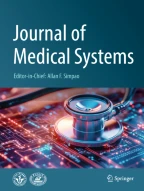Abstract
IEEE 802.15.4 technology provides one solution for low-rate short range communications. Based on the integrated superframe structure of IEEE 802.15.4, a novel low-delay traffic-adaptive medium access control (LDTA-MAC) protocol for wireless body area networks (WBANs) is proposed in the paper. In LDTA-MAC, the guaranteed time slots (GTSs) are allocated dynamically according to the traffic load. At the same time, the active portion of superframe is kept to be a reasonable duration to decrease the energy consumption of the network devices. Moreover, for the successful GTS requests, the related data packets are transmitted in the current superframe instead of waiting more time to reduce the average packet delay. Simulations are conducted to evaluate the network performance and verify our protocol design. Comparing with IEEE 802.15.4, the results reveal LDTA-MAC accommodates more devices access to the network and reduces the packet delay obviously without the cost of more energy consumption.














Similar content being viewed by others
References
Otto, C., Milenkovic, A., Sanders, C., and Jovanov, E., System architecture of a wireless body area sensor network for ubiquitous health monitoring. J Mob Multimed 1(4):307–326, 2006.
Ullah, S., Higgins, H., Braem, B., Latre, B., Blondia, C., Moerman, I., Saleem, S., Rahman, Z., and Kwak, K. S., A comprehensive survey of wireless body area networks: On PHY, MAC, and network layers solutions. J. Med. Syst. Published online: Aug. 19, 2010.
Chen, M., Gonzalez, S., Vasilakos, A., Cao, H., and Leung, V. C. M., Body area networks: A survey. Mobile Networks and Applications. Published online: Aug. 18, 2010.
Khan, J. Y., Yuce, M. R., Bulger, G., and Harding, B., Wireless body area network (WBAN) design techniques and performance evaluation. J. Med. Syst. Published online: Oct. 16, 2010.
IEEE 802.15.4: Wireless Medium Access Control (MAC) and Physical Layer (PHY) Specifications for Low-Rate Wireless Personal Area Networks (WPANs), Sep. 2006.
IEEE 802.15 WPAN Task Group 6 Body Area Networks (BAN), http://www.ieee802.org/15/pub/TG6.html.
Astrin, A. W., Li, H. B., and Kohno, R., Standardization for body area networks. IEICE Trans Commun E92.B(2):366–372, 2009.
IEEE 802.11 WG. Part 11: Wireless LAN Medium Access Control (MAC) and Physical Layer (PHY) Specification. 1999.
IEEE Standard for Local and Metropolitan Area Networks Part 16: Air Interface for Fixed and Mobile Broadband Wireless Access System. 2006.
TG6 Technical Requirements Document (TRD), IEEE 802.15-08-0644-09-0006.
Rosener, D., Introduction to bluetooth engineering. John Wiley & Sons Inc., 2007.
Ullah, S., and Kwak, K. S., An ultra low-power and traffic-adaptive medium access control protocol for wireless body area network. J. Med. Syst. Published online: Aug. 3, 2010.
Li, C., Li, H. B., and Kohno, R., Reservation-based dynamic TDMA protocol for medical body area networks. IEICE Trans Commun E92-B(2):387–395, 2009.
Ullah, S., Shen, B., Riazul Islam, S., Khan, P., Saleem, S., and Kwak, K. S., A study of MAC protocols for WBANs. Sensors 10(1):128–145, 2010.
Marinkovic, S., Spagnol, C., and Popovici, E., Energy-efficient TDMA-based MAC protocol for wireless body area networks. 2009 Third International Conference on Sensor Technologies and Applications, Athens, Glyfada, Greece, 18–23 June 2009, pp. 604–609.
Watteyne, T., Auge-Blum, S., Dohler, M., and Barthel, D., Anybody: a self-organization protocol for body area networks. Second International Conference on Body Area Networks Florence, Italy, 2007.
Zhang, Y., Dolmans, G., A new priority-guaranteed MAC protocol for emerging body area networks. 2009 Fifth international conference on wireless and mobile communications, Cannes, La Bocca, France, 23–29 Aug. 2009, pp. 140–145.
Otal, B., Alonao, L., and Verikoukis, C., Highly reliable energy-saving MAC for wireless body sensor networks in healthcare system. IEEE J Sel Areas Commun 27(4):553–565, 2009.
O’Donovan, T., O’Donoqhue, J., Sreenan, C., Sammon, D., O’Reilly, P., and O’Connor, K. A., A context aware wireless body sensor network (BAN). 3rd International Conference on Pervasive Computing Technologies for Healthcare, London, UK, April 2009.
Latre, B., Braem, B., Moerman, I., Blondia, C., Reusens, E., Joseph,W., and Demeester, P., A low-delay protocol for multihop wireless body area networks. 4th International Conference on Mobile and Ubiquitous Systems: Networking and Services, Philadelphia, PA, USA, 2007, pp. 479–486.
http://www2.nict.go.jp/w/w122/old/mt/b192/mirai-sf/overview_e.html
Ma, J., Gao, M., Zhang, Q., and Ni, L. M., Energy-efficient localized topology control algorithms in IEEE 802.15.4-based sensor networks. IEEE Trans Parallel Distrib Syst 18(5):711–720, 2007.
Acknowledgement
This work was supported by Huawei Fund, National Science Fund for Distinguished Young Scholars (Grant No. 60725105) to Prof. J. Li, National Science Fund (Grant No. 60702057, U0835004), the Scientific Research Foundation for the Returned Overseas Chinese Scholars, State Education Ministry, the Fundamental Research Funds for the Central Universities (JY10000901002), Special Research Fund of State Key Laboratory and the 111 Project (B08038).
Author information
Authors and Affiliations
Corresponding author
Rights and permissions
About this article
Cite this article
Li, C., Hao, B., Zhang, K. et al. A Novel Medium Access Control Protocol with Low Delay and Traffic Adaptivity for Wireless Body Area Networks. J Med Syst 35, 1265–1275 (2011). https://doi.org/10.1007/s10916-011-9682-5
Received:
Accepted:
Published:
Issue Date:
DOI: https://doi.org/10.1007/s10916-011-9682-5



